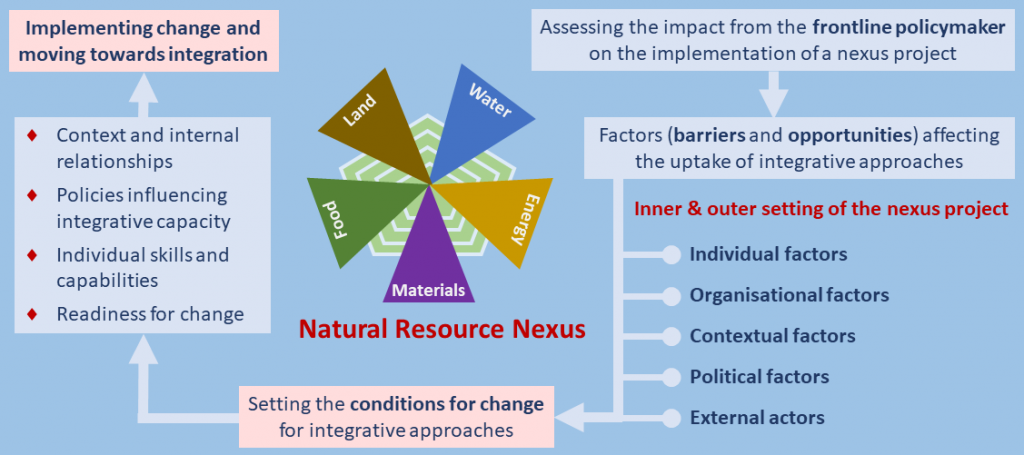Welcome
Why forests?
This website showcases my research into European forest policy, which is motivated by an interest in how various sectoral interests influence the forest-based sector. This focus stems from my research into European Union (EU) policies and the broader dynamics of forest governance. I am fascinated by the complex interplay of socio-economic and environmental interests competing for access to a vital natural resource.
Forest Policy
What is forest policy? At first glance, it might seem that it is simply about forests or wood-based products. However, the definition is not always straightforward. In fact, its scope extends beyond forests alone and intersects with many other policy areas, making forest policy a much more complex and nuanced field than it initially appears to be.
EU and Forests
In the EU, forests themselves fall outside the EU’s exclusive and shared competences. Consequently, the EU can only implement non-legally binding policy instruments, also known as ‘soft law’, in this area. The same generally applies to global or pan-European forest-related agreements, such as the United Nations Non-Legally Binding Instrument on All Types of Forests.
EU Wood-based Policy
How can Europe balance the growing demand for wood with its urgent climate and biodiversity goals? My latest report, which I co-authored with Gerhard Weiss, Jerbelle Elomina and Helga Pülzl, provides a comprehensive overview of the fragmented landscape of EU wood policy, mapping the institutions, actors and regulations that influence the wood-based sector.

European Forest Policy and Governance
Like many, I found myself with time to reflect during the COVID lockdown. I thought, why not write a book? Fast forward three years, many late nights later, it is finally finished!
Watch the video from the launch of my book. The short webinar features a presentation about my book, followed by a Panel discussion with leading experts Helga Puelzl (European Forest Institute), Roman Michalak (UNECE) and Georg Winkel (Wageningen University & Research). The webinar was moderated by Gerhard Weiss (University of Natural Resources and Life Sciences, Vienna (BOKU)).
Find out more…
The book offers a fresh perspective on European forest policy processes, guiding readers through key governance frameworks and analytical approaches used in forest policy research. It addresses pressing social and environmental challenges, including:
- The circular (bio)economy and its implications for sustainable resource use.
- Forest tenure and its role in policy and management.
- The challenge of balancing multifunctional forests for conservation, industry, and recreation.
- Strategies for living with wildfire in a changing climate.
Through a series of case studies, this book contributes to the wider debate on European forest governance.
Forest Fires and EU Policy: Navigating the Smoke
In recent years, Europe has witnessed an alarming increase in forest fires, with devastating consequences for ecosystems, communities and economies. From the record-breaking wildfires of 2022 to the annual destruction of hundreds of thousands of hectares, it is clear that Europe’s forests are facing an unprecedented threat.
But how is the EU tackling this escalating crisis?

Through an in-depth analysis of EU forest fire policy, my latest research explores how wildfires are framed in key EU documents and strategies. By examining the narratives of risk management, climate resilience and rural development, it provides insight into the EU’s evolving approach to managing wildfires.
As the frequency and intensity of fires continue to increase, my paper highlights the urgent need for:
- Coordinated action between EU institutions, national governments and local communities.
- Innovative solutions that integrate technology, sustainable land management and early warning systems.
- Proactive policies to improve prevention, preparedness and recovery.
Without a comprehensive, forward-looking approach, Europe risks facing even more devastating wildfires in the future. How can policy makers, researchers and practitioners work together to build resilience?
Crosswalking the EU Nature Restoration Regulation and the Kunming-Montreal Global Biodiversity Framework

As the world grapples with accelerating biodiversity loss and climate crises, the European Union (EU) and the global community have been stepping up efforts to combat these challenges. Two important frameworks are at the forefront of this work: the EU Nature Restoration Regulation and the Kunming-Montreal Global Biodiversity Framework (KM-GBF).
Through the lens of forest ecosystems, my latest article considers some of the synergies between these two frameworks, highlighting the potential and challenges of their alignment.
Key implications for policy and practice
- The EU’s restoration target was reduced from 30% to 20% by 2030, falling short of the KM-GBF’s targets.
- Commitments in the restoration regulation have shifted from binding obligations to subjective aims, undermining the accountability of EU Member States in meeting regional and global biodiversity targets.
- Including renewable energy production from forest biomass may conflict with forest conservation goals, challenging the balance between climate and biodiversity objectives.
- Economic factors influencing restoration planning may lead to uneven commitment and prioritisation across EU Member States.
- The restoration regulation’s focus on specific restoration actions may not fully address the broader biodiversity goals of the KM-GBF, such as sustainable use and benefit-sharing.
Find out more or read my post at the resilience blog!

Breaking down barriers to sustainability transition
Have you ever wondered what role public officials and policy practitioners play in implementing integrative approaches to natural resources management? Our recent paper sheds light on the subject, revealing the impact of individual, organisational, contextual, political, and external factors on the success of a nexus project.
- The findings highlight the crucial role street-level bureaucrats play in enforcing policies and the significant influence they have on the effectiveness and acceptability of policies. The research also highlights the importance of individual values and norms, particularly their openness to change, in the success of a project.
- On the flip side, the paper also stresses the challenges posed by organisational and political factors, and the need for active leadership and clear guidelines in implementing a nexus approach.
- Our study provides valuable lessons for researchers and practitioners and demonstrates the importance of examining the street-level bureaucracy perspective in the context of sustainability transitions. Future research could delve into the link between the street-level perspective and organizational learning, institutional capacities, and institutional change.
Discover more about the nexus approach!

Circularity concepts in forest-based industries
The world’s prevalent economic model, based on a ‘take-make-use-dispose’ approach, cannot maintain and raise human standards of living without causing environmental degradation and incurring economic risks. Decoupling economic activity from the increasing demand for natural resources could be done through circular, bio-based economy approaches leading to a regenerative growth model, allowing humankind to reduce its environmental footprint on the planet.

Implementing Circular-Bioeconomy Principles
The wood-based sector has the potential to contribute significantly to the circular bioeconomy. Our paper examines the potential for a circular wood-based system. The qualitative value chain analysis demonstrates that a circular approach requires transformation across entire value chains. Implementing circular bioeconomy principles will require new business models, cooperation across sectors and companies, and the application of new technologies and management tools.

National Governments support a Declaration on Forests and Land Use and launch a Global Forest Finance Pledge at the COP26
Under the umbrella of the UN Framework Convention on Climate Change (UNFCC) and the ongoing 26th United Nations Climate Change Conference (COP26) in Glasgow, 124 countries have just signed a Declaration on Forests and Land Use, from now on referred to as the Glasgow Declaration) as of 2 November 2021. The declaration sets out to end and reverse deforestation by 2030 and facilitate a sustainable land-use transition.

The Art of the “Green” Deal
The European Green Deal is being promoted as a cornerstone for European policy over the next five years, setting out an ambitious package of measures that aim to facilitate a sustainable green transition in the EU. This article explores how forests have been framed in the Green Deal and casts some light on its potential role in the development of the third EU Forest Strategy.

Downloading Europe
The EU Forest Action Plan was a tool that facilitated voluntary cooperation between EU Member States (no enforcement capabilities), with some coordinating actions being implemented by the European Commission. The reason for returning to the Forest Action Plan in this article is to provide further insight into how it was implemented by EU Member States.
And into the forest I go to lose my mind and find my soul
– John Muir

Can nature conservation and wood production be reconciled in managed forests?
This article sets out to improve our understanding of the framework conditions that surround the uptake of Integrated forest management (IFM), focusing on the driving factors that influence the integration and reconciliation of biodiversity conservation and wood production as an inherent component of IFM.

A new EU Forest Strategy for 2030
One of the flagship actions planned for under the European Green Deal was the development of a third European Union Forest Strategy for which the Commission prepared a proposal in 2021. The European Commission has characterised the objective of the third Strategy as “a vision and concrete actions to improve the quantity and quality of European Union forests and strengthen their protection, restoration and resilience. It aims to adapt Europe’s forests to the new conditions, weather extremes and high uncertainty brought about by climate change”.
A forest of these trees is a spectacle too much for one man to see
– David Douglas

The best thing one can do when it’s raining is to let it rain.
– Henry Wadsworth Longfellow

Environmental data value chains – Is sharing caring?
Access to high-quality, timely and comparable data is a prerequisite for an effective decision-making process and having such data available for the environment is fundamental to efficient and evidence-based policymaking. This article reviews the establishment of a Shared Environmental Information System (SEIS) in Europe and Central Asia to improve our understanding of how environmental data value chains are being employed to produce, share and use reliable data on the environment and whether this data is used in policymaking.

Natural Resource Nexuses
The nexus approach is a way of ensuring more integrated and sustainable perspectives of natural resource use beyond the traditional sectoral “silos”. This is an approach that can be applied at all scales. I have, together with colleagues in the UN Economic Commission for Europe (ECE), published a report that analyses seven nexus hotspots in an attempt to showcase specific challenges and opportunities for a nexus approach. This was done within a broader analytical framework, including regional megatrends and the SDGs, for the pan-European region.